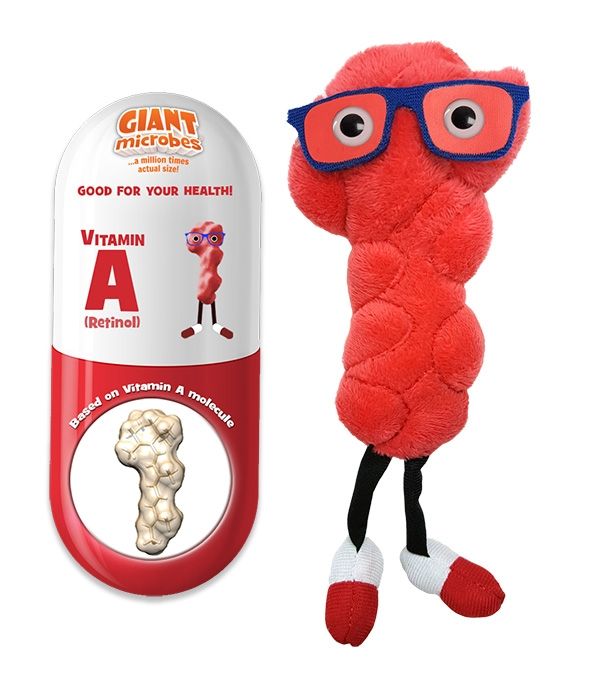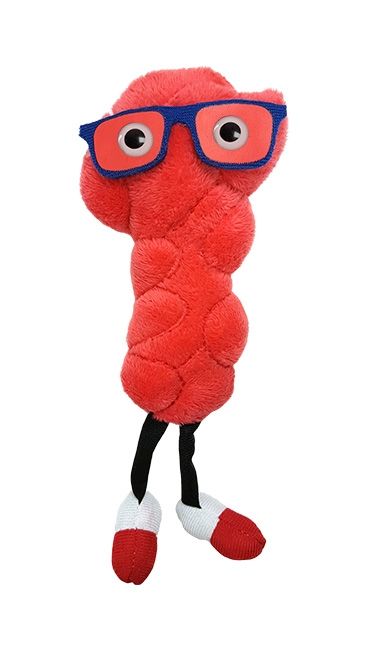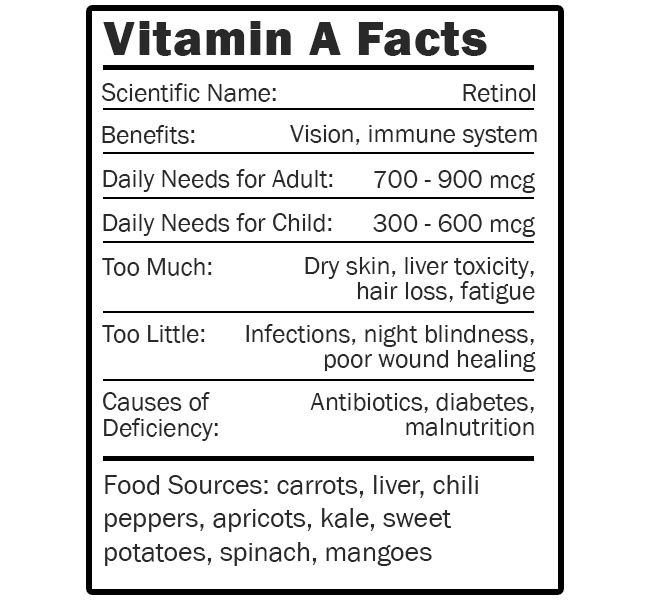Vitamin A (Retinol)
Out of Stock
Our Vitamin A is based on the shape of the actual molecule!

Vitamin Angels provides lifesaving vitamins to mothers and children at risk of malnutrition - reducing preventable illness, blindness, and death. 10% of your purchase will be donated to Vitamin Angels.
Product Details
Additional Information
| Sizes | Giantmicrobes are based on actual microbes, cells, organisms and other critters, only 1,000,000 times actual size! Gigantic (GG) 16-24" XL (XL) 10-15" Original (PD) 5-8" Keychain (KC) 2-4" with clip |
|---|---|
| Materials | Plush from all new materials. Stuffed with polyester fiber fill. Surface washable: sponge with water & soap, air dry. |
| Packaging | Each plush microbe includes a printed card with fun, educational and fascinating facts about the actual microbe or cell. |
| Safety | Every product meets or exceeds U.S. and European standards for safety. For ages 3 and up. |
All about Vitamin A (Retinol)

Vitamin A Facts:
Not surprisingly, Vitamin A was the first vitamin to be discovered. In 1907 Dr. Elmer McCollum found that blindness in rats could be cured by a food chemical he named “A-factor”. The biggest role for A is helping your vision so it’s sometimes called the sight vitamin. The pigments in your eyes need A to see colors. It’s also important for making red blood cells and for healthy skin and the immune system. Carrots are orange and good for your eye health due to beta carotene, which our bodies use to make A. Carrots, though, do not hold super veggie powers that improve night vision. This myth was popularized during WWII when Britain tried to fool the Germans into thinking it was carrots that made their fighter pilots so successful at night, and not the use of radar technology.
There are two kinds of vitamins: water soluble (B and C) and fat soluble (A, D, E, K). Water soluble vitamins move in your bloodstream, are easily absorbed into your cells, and are excreted in urine. So we need to eat food with lots of B and C. Fat soluble vitamins like A need dietary fat to be absorbed and transported in the body. They are stored in body fat and in the liver. So A and the other fat soluble vitamins stay in our bodies a long time. We use A slowly, so we don’t need as much of it as B and C. The daily needs for A are in micrograms (mcg), or a millionth of a gram. Thus, if you meet the daily intake of 900 mcg you are eating about one grain of sand of vitamin A.
| Description |
Scientific Name: Retinol Benefits: Vision, immune system Daily Needs (Adult): 700 - 900mcg Daily Needs (Child): 300 - 600mcg Too Much: Dry skin, liver toxicity, hair loss, fatigue Too Little: Infections, night blindness, poor wound healing Causes of Deficiency: Antibiotics, diabetes, malnutrition Food Sources: carrots, liver, chili peppers, apricots, kale, sweet potatoes, spinach, mangoes |
|---|









